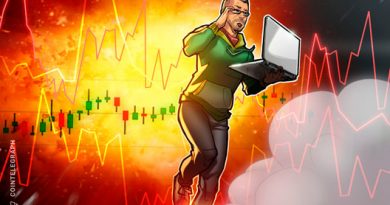Coinbase stock plunges to record low, further decoupling from crypto
The stock was down by as much as 6.5%, even as the overall cryptocurrency market reached new all-time highs.
Shares of Coinbase Global Inc. tumbled to fresh lows on Thursday, as Wall Street investors continued to cycle out of high-flying tech stocks. The cryptocurrency market, meanwhile, reached a record valuation over $2.4 trillion.
COIN stock bottomed at $255.15, where it was in danger of breaching the $250 reference price on the eve of its public listing on Apr. 14. After an explosive debut, COIN has been on a downward trajectory. The company now has a total market capitalization of $48.7 billion, which is roughly half of the $100 billion top it achieved last month.

Mike Bailey, director of research at FBB Capital Partners, told Bloomberg that the selloff of Coinbase was largely due to the formation of a “mini-bubble” that is now in the process of bursting. He explained:
“We saw a mini-bubble in SPACs, IPOs, crypto, clean-tech and hyper-growth in late 2020 and early 2021 and many of these asset classes are nursing bad hangovers.”
However, Bailey’s assertion that crypto is nursing a ‘bad hangover’ is misplaced, given the relative outperformance of the asset class this year. Since January 1, the cryptocurrency market has more than tripled, with the likes of Bitcoin (BTC), Ethereum (ETH) and many other leading altcoins hitting fresh records.
Of course, crypto is not without extreme price volatility. The market shed hundreds of billions of dollars between Apr. 17-23 as Bitcoin slipped to around $47,000, a key level of support. A swift recovery brought Bitcoin back above $50,000 and eventually $57,000, where it currently resides.
COIN’s selloff in recent days mirrors a similar decline in the technology-heavy Nasdaq Composite Index. The Wall Street benchmark index has recorded five consecutive declines and is down in seven of the last eight trading sessions. After closing at a record high of 14,138.78 on Apr. 26, the Nasdaq Composite has declined over 4%.




